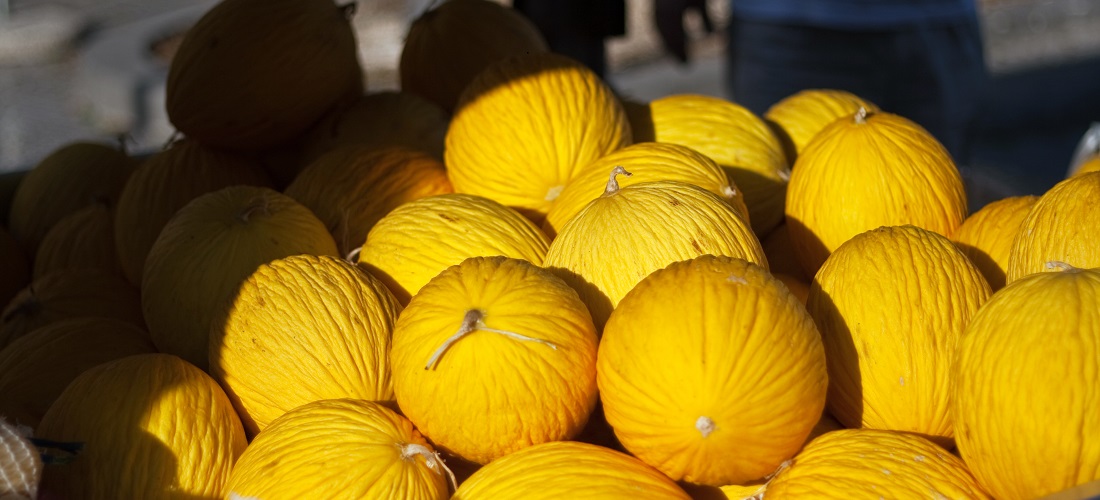
Ceará to Expand Melon Exports with New Plantings and Increased Global Market Reach
Feb, 18, 2025 Posted by Gabriel MalheirosWeek 202508
Ceará is set to add 1,500 hectares of melon farmland for export in 2025, boosting prospects for greater participation from local producers in international trade, according to Silvio Carlos Ribeiro, Executive Secretary of Agribusiness at the State Secretariat for Economic Development (SDE).
This expansion represents a 50% increase in the area planted, aimed at growing production for export. Currently, Ceará has about 3,000 hectares dedicated to melon farming for the international market.
The importance of this growth becomes even more evident when considering the role of melons in Ceará’s fruit export sector. Out of the $85.6 million in fruit exports registered in 2024, melons accounted for 69.8%.
“I don’t have an exact number yet, but I am confident that exports will increase in 2025,” said Ribeiro in an interview with O POVO.
The 1,500 hectares of melon fields are located in São João do Aruarú, a district situated between the municipalities of Morada Nova and Ocara, approximately 166.5 kilometers from Fortaleza. It is in this area that Itaueira Agropecuária has decided to resume melon exports after a seven-year hiatus due to water supply challenges. With full reservoirs and access to other resources that support the business, the company plans to ramp up its exports in 2025.
The production model chosen, Ribeiro explains, is irrigation. In addition to melons, Itaueira also grows watermelons, peppers, and fruit pulp in Ceará across various regions. The company operates in Piauí (melons), Bahia (melons and grapes), and Rio Grande do Norte (shrimp).
Ribeiro highlighted three key factors that are boosting confidence among melon producers and ensuring smooth operations from planting to harvest. These factors have been implemented in Ceará between 2024 and 2025.
The first and most crucial is water supply. “We now have better water availability, and it will last for at least three years. This is thanks to the São Francisco River Water Transposition, increased rainfall, reservoir recharge, and improvements in water efficiency,” he emphasized.
January 2025 marked the 9th highest water volume in reservoirs since 2003, according to the Ceará Water Resource Management Company (Cogerh). Currently, Ceará holds 44% of its total storage capacity across 157 reservoirs.
Another important factor supporting increased fruit exports is the expansion of fruit fly-free areas in the Morada Nova region, where Itaueira will cultivate 1,500 hectares for export. “This area is monitored by ADAGRI (Ceará’s Agricultural Defense Agency), ensuring it is free of fruit flies, which is a key certification for exports to the United States. This certification is essential for both the U.S. and Europe, adding significant value to the crops,” Ribeiro explained.
The third component strengthening export confidence is the energy supply in the region. Ribeiro explained that the “combination” required to make agriculture and energy work is “water, land, and energy,” and the last component was previously lacking.
To address this, the state government included energy supply for the region in its Special Electric Power Investment Program (PIE). Under this program, the local energy distributor, Enel, is required to prioritize infrastructure projects identified by the Ceará government. The company finances the projects based on a model established in its concession, where 1% of the previous year’s net revenue from electricity sales is used for state-designated projects.
As preparations for increased melon exports progress, Ribeiro discussed ongoing efforts to secure buyers and attract new international producers to Ceará. Fresh from attending Fruit Logistica in Berlin from February 5-7, he noted that numerous investors sought to learn about Ceará’s fruit production capabilities.
Fruit Logistica is considered one of the top two trade fairs in terms of business generation, and for the second consecutive year, Ceará set up a dedicated space to showcase its local products and potential. Visitors came from Austria, Spain, Israel, the UK, and, notably, the U.S. and India.
“We wanted to highlight Ceará as a major fruit production and export hub. We have a very strong infrastructure, and we had visits from entrepreneurs interested in coming to Brazil, specifically Ceará. We are expecting good business opportunities,” Ribeiro added.
Today, Ceará’s fruits, along with those shipped from the Pecém and Mucuripe ports, are primarily exported to the United Kingdom and Rotterdam, the Netherlands. Rotterdam serves as a distribution point for shipments to other European countries.
Ceará’s government representatives, including newly appointed Secretary of Economic Development Domingos Filho, are targeting more distant and valuable markets, such as the Middle East and China.
In addition to melons, Ribeiro confirmed that there are plans to increase the production of mangoes and bananas for export this year as well.
Source: O Povo
-
Other Cargo
Nov, 25, 2024
0
Brazilian Medical Device Exports to Africa Reach $20 Million at Africa Health 2024
-
Meat
Apr, 07, 2021
0
Brazil asks Russia to lift slaughterhouse restrictions
-
Ports and Terminals
Apr, 02, 2024
0
Port of Niterói to receive federal investments
-
Shipping
May, 17, 2023
0
Brazil gov’t to transfer BRL 9.4 million to fund waterway improvement


